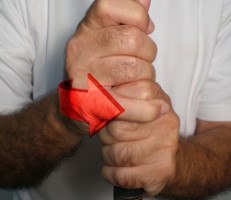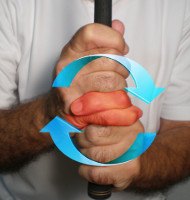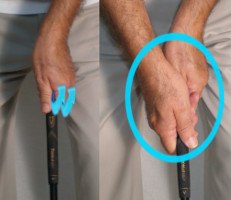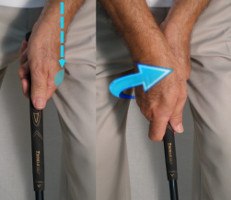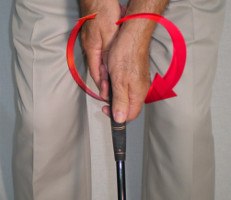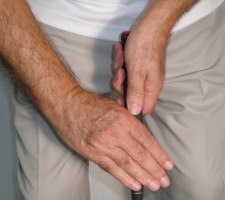Pros and Cons of Every Golf Grip Style |
Best Grip? Overlapping vs Interlocking |
Grip style: Vardon (overlapping) |
Hand position: Neutral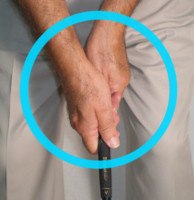 |
Putting grip style / hand position: Reverse overlap / neutral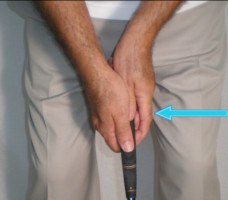
|

He has mocked his own tame-as-toast image in a widely seen rental car commercial. But as Steve Stricker’s grip shows, the veteran pro isn’t afraid to swerve outside the lines – especially with the putter in his hands.
While hardly a radical departure from the norm, Stricker’s much-studied putting grip does vary from the textbook. First, he uses an overlapping hold, rather than the more common reverse overlap. But his strongly “uncocked” or “unhinged” left wrist is the main difference between Stricker and most players. Think of it like this: With your left arm held straight out, point your forefinger toward the ground. That’s uncocked. Point up and it’s cocked.
By dramatically uncocking his left wrist, Stricker actually pulls the putter’s heel off the ground. He also forces the club into his palms and forms a firmly locked union between hand and forearm. The result is a rock-steady stroke with virtually no hand or wrist action.
Like many players, Steve Stricker’s grip with the full swing – and indeed, his entire swing – is similar to his putting stroke. It’s a more palms-oriented grip than the typical pro’s, and guess what? It serves to limit wrist movement during Stricker’s backswing. (Apparently, Steve is very anti-wrists.)
The downside to gripping the club this way? Loss of power. When the wrists are hindered, less energy is stored and unleashed into the ball. The upside? Consistent accuracy. Stricker’s grip, takeaway, backswing and downswing are beautifully synchronized, while his big-muscle control prevents wildly off-target shots.
